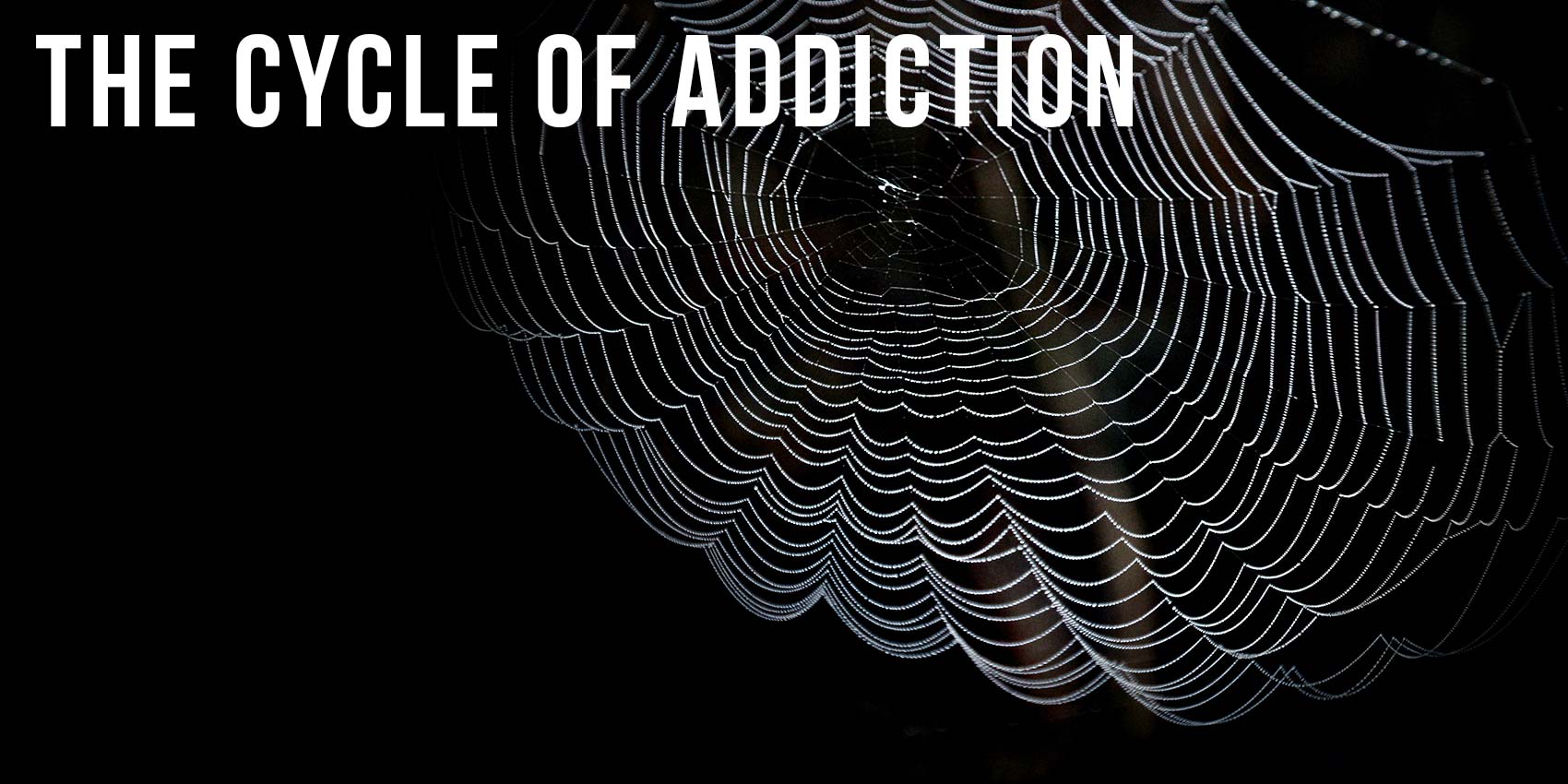14 Nov The cycle of addiction

Addiction can be thought of as a downward spiral: with addiction, your brain changes in response to drugs and other specific addictive activities like gambling and sex. Those change makes you less and less likely to make good decisions, especially about drug use. The more you use, the further away from your old thinking self you can become.
The cycle of addiction is perpetuated (meaning that it is continued, supported) by three different processes that are important for you to know: tolerance, sensitization and withdrawal.
Tolerance refers to how much of a drug or addictive activity you need in order to feel the effects. Your tolerance goes up the more you partake in that activity or do drugs so you need more of it to feel the same effects. Think of when you train for a sport: running one mile used to cause you pain, but now one mile is nothing. You can run 5 miles before you start to feel pain. You can tolerate more exercise.
Tolerating more exercise is generally a good thing, but tolerating more of potentially harmful things like drugs and alcohol is not such a good thing. Tolerance adds to addiction because people start to need more and more of a drug (or an activity) in order to feel the effects.
Sensitization is yet another change taking place in the brain that leads to a person becoming addicted. It refers to a person becoming highly “sensitive” to drugs and to things associated with the drug, so that they are easily triggered to want to use it.
Sensitization is different from tolerance, but adds to the downward spiral. Tolerance has to do with the experience of drug taking (I need more to experience the same thing). Whereas, sensitization has to do with the actual craving for the drug (One drop of alcohol and suddenly I am craving it- I can’t stop myself from another drink). As tolerance develops, the addict needs more and more of the substance to get the same pleasant effect he got from a smaller amount before; as sensitization develops, he needs less and less of the substance to crave it intensely, and just being in certain environments can cause a craving. Think about the cycle this creates: I only need a tiny amount to start craving (wanting) the drug, but I need a lot more of the drug to satisfy that craving. Can you say, “Uh-oh?”
(These two processes apply to addictive activities as well: I need more intense video games to find pleasure in them and as soon as I see the video screen, I want to play.)
Now throw in the added ingredient of withdrawal – your body’s painful experience when it no longer has the drug. Withdrawal is your body trying to re-adjust to proper functioning without the drug. It signals your body’s dependence on the drug.
Withdrawal symptoms can be extremely intense, and in some cases (like with heroin) life threatening. Withdrawal symptoms include headaches, nausea, vomiting, DT’s (delirium tremens aka violent shaking) and diarrhea (not fun) – to name just a few. With addiction to activities, withdrawal symptoms are more psychological in nature. Failure to play video games or shop causes irritation and an inability to think about other things, for example.
Withdrawal creates a spiral ripe for addiction: you take drugs (or sugar or coffee), feel great, but then experience withdrawal, making you want to feel good again. PLUS, you may have developed sensitization so you now CRAVE the drug (or sugar or coffee) even more when you are going through withdrawal (it’s hard enough when you crave something and feel good—try craving something when you feel AWFUL).
Tolerance + sensitization + withdrawal =
a perfect recipe for addiction




Post Question:
Do you crave anything at times? Sugar? Coffee? Attention? How do you feel when you do not have it?
Answer the post question here
What's being said